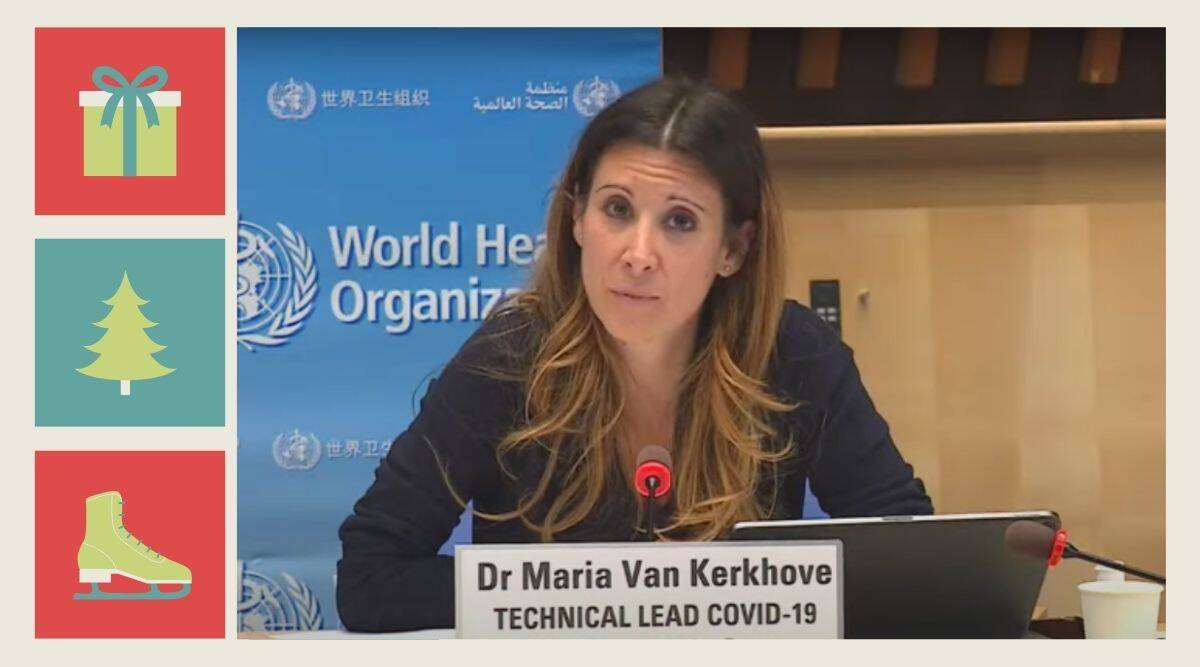Geneva, Feb 9: Describing the new COVID-19 variants as the "wild card", a top World Health Organisation official has warned that the Omicron will not be the last one and the possibility of other new variants is really high.
During a question and answer session live streamed on WHO's social media platforms on Tuesday, the WHO COVID-19 Technical Lead Maria Van Kerkhove said that the global health agency is tracking four different versions of Omicron.
"We know a lot about this virus, but we don't know everything. And quite frankly, the variants are the wild card. So we are tracking this virus in real time as it mutates as it changes But this virus has a lot of room to move," she said.
"Omicron is the latest variant of concern. It will not be the last variant of concern that WHO will speak about. The next one, you know, that will come hopefully, it will take some time to get there. But with the level of intensity of spread, the possibility that we will have other variants is really high, she said.
"So we need to ensure that we again, not only increase vaccination coverage, but we also take measures to reduce the spread, she added.
Since the designation of B.1.1.529 as a variant of concern on November 26, 2021, several lineages have been identified. These include Pango lineages BA.1, BA.1.1, BA.2 and BA.3, which are all being monitored by WHO under the umbrella of Omicron'.
"BA.2 is more transmissible than BA.1 so we expect to see BA.2 increasing in detection around the world, Van Kerkhove said.
According to the UN health agency's weekly epidemiological report, released on Tuesday, the Omicron variant is increasingly dominant - making up nearly 97 per cent of all cases.
"The prevalence of the Omicron variant has increased globally and is now detected in almost all countries. However, many of the countries which reported an early rise in the number of cases due to the Omicron variant have now reported a decline in the total number of new cases since the beginning of January 2022, it said.
Globally, during the week of January 31 to February 6, the number of new COVID-19 cases decreased by 17 per cent as compared to the number reported during the previous week, while the number of new deaths increased by 7 per cent.
As of February 6, over 392 million confirmed cases and over 5.7 million deaths have been reported globally.
Let the Truth be known. If you read VB and like VB, please be a VB Supporter and Help us deliver the Truth to one and all.
Mumbai (PTI): A deaf and mute woman's complaint about a sexual assault that took place 16 years ago in Mumbai has unmasked a serial predator, revealing a disturbing pattern of abuse and blackmail he perpetrated on several women from the community.
The accused was arrested on December 13 after the survivor broke her silence recently following the suicide attempt by one of the women he allegedly sexually harassed.
Disturbed by the suicide attempt, she confided in her friends during a video call about the assault that occurred in 2009.
According to the police, the survivor, a resident of the western suburbs, communicated in sign language during a video call with her friends and colleagues, who were part of a WhatsApp group, that the accused had drugged and raped her when she was a minor.
She also took her husband into confidence, and with support from Thane Deaf Association president Vaibhav Ghaisis, activist Mohammed Farhan Khan, sign language interpreter Madhu Keni, and a retired officer from the Ali Yavar Jung National Institute of Speech and Hearing Disabilities Divyangjan, the survivor approached the police.
The survivor, her husband and a few of her friends went to the Kurar police station, where her statement was recorded in camera, with Keni as interpreter, and the accused, Mahesh Pawar, was arrested a few hours later from Virar, a suburb in Palghar district.
ALSO READ: Drug peddler's property worth Rs 1 crore attached in Srinagar
Recalling the trauma she endured 16 years ago, the survivor said that a female friend had invited her to explore the city in July 2009 and took her to Pawar's home in Vakola, Santacruz, an official said.
The accused allegedly offered her samosas and some beverage to celebrate the female friend's birthday. The survivor said she was forced to have the drink, which Pawar had allegedly spiked, and after a while, her friend left her alone with him.
The accused allegedly overpowered and raped her, and later blackmailed her with the recorded video of the assault.
The trauma of assault stayed with her over the years, and the attempted suicide of another woman from the community, allegedly assaulted by Pawar, propelled her to come forward.
A probe has revealed that the accused had similarly drugged and assaulted speech and hearing impaired women and threatened them into silence by blackmailing them with obscene videos, a senior police officer said.
The accused allegedly shot obscene videos of several women, using which he blackmailed them and extorted money, gold and mobile phones, he said.
He allegedly forced women into participating in nude video calls with him and recorded these to threaten them, the official said.
"As per initial investigation so far, we have evidence of his abuse of seven women, but the number can increase to more than 24," the official told PTI.
While Pawar has been remanded in judicial custody, no other woman has come forward with a complaint against him as yet, he said.
Talking to PTI, Keni said all women who have survived abuse and harassment by Pawar want to lodge a complaint against him.
She claimed that the accused had extorted money from one of the women he abused, but did not return the sum even when she needed it for a medical emergency.





